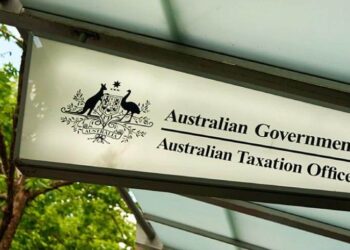The Treasury Laws Amendment (More Flexible Superannuation) Bill 2020 extending the use of the bring-forward rules from age 65 to 67, enabling Australians aged up to 67 to trigger bring-forward non-concessional contribution payment, is still yet to be finalised.
Speaking on a recent technical podcast, BT head of technical services Bryan Ashenden said there is continued uncertainty around the bring-forward provisions, with recent updates showing that the bill remains in the Senate, following minority party proposed amendments which are yet to be debated.
Also speaking on the podcast, BT technical consultant Tim Howard noted these proposed amendments are not in relation to changing the bring-forward age but are additional proposals added to the bill around employer contributions, concessional contribution limits and COVID-19 early access integrity measures.
“This bring-forward proposal remains as increasing the legislated age from under 65 to under 67, at any time in the financial year of contribution,” he said.
Mr Howard said advisers need to monitor for any changes that can bring greater certainty by 30 June 2021.
“Parliamentary sitting days, in particular the Senate, are the crucial component. There will be three joint sitting days for both houses on the eve of, and then following the 2021 federal budget, on 11 May,” Mr Howard said.
“After this, the Senate does not sit again until the middle and then second-last week in June. This does not leave much time, I do agree.
“You also never know what might be in the federal budget in terms of changes which may impact this measure. Sometimes, you will see new bills introduced to package together and tidy up unfinished business such as this, so keep a close eye on things.”
Mr Howard noted that with the continued uncertainty, advisers are in a tricky position, especially when considering clients aged 66, or turning age 67, who are no longer working. Proposed changes may mean this year is their last chance to contribute such an amount; however, by the time it becomes law, it may be too late, according to Mr Howard.
“If the unexpected delay in the passage of this piece of legislation is anything to go by, it highlights the importance of not providing your clients with any advice outside of what is the law at the time,” he said.
“Rely on the current law, at the time you are providing your advice. There is really no benefit in trying to predict outcomes from variable events, and it is through uncertainty such as this that, I am sure, your clients will be looking to you for help.
“For example, someone who is turning age 67 this financial year would currently have a non-concessional limit of $100,000. If the rules change, as proposed, they may have a non-concessional limit of $300,000 if their total super balance is below $1.4 million.
“Matters get more complex for this client if they are no longer working, as from age 67 the work test must be met, before certain voluntary contributions, such as a non-concessional contribution, can be made. Under current law, the answer here is $100,000 only.”
Mr Ashenden also flagged that, for a number of years, some advisers have employed a “double deduction” strategy with clients in the month of June.
This involves making double the concessional cap as a contribution, and claiming the entire amount as a deduction this financial year, allocating half this year and the rest in July. However, Mr Ashenden questioned whether there needs to be greater consideration of timing during the pending legislation.
Mr Howard said it’s an option not just restricted to concessional contributions but flagged that it does tend to be restricted to individuals who run their own SMSF.
“For example, you have a client who is 66, turning 67 on the 25th of June 2021,” he said.
“They are no longer working, and therefore cannot make any additional contributions to super from their 67th birthday, but they do have $200,000 they want to contribute to super.
“Now, the bring-forward changes have not passed, and are not yet available for this client, so what can we do when their non-concessional cap is only $100,000 for 2020–21? In this case, your client could make two, separate, $100,000 contributions in June 2020, before their birthday, to their SMSF.
“The first $100,000 contributions is allocated this financial year, and the second can be held and then allocated within 28 days of the following month, i.e. by 28 July 2021. So, what do you have now? You have made use of next year’s contribution cap.
“The reason this is possible is eligibility to contribute is at the time of contribution, but the allocation to the member’s account is what counts for contribution cap purposes.”


